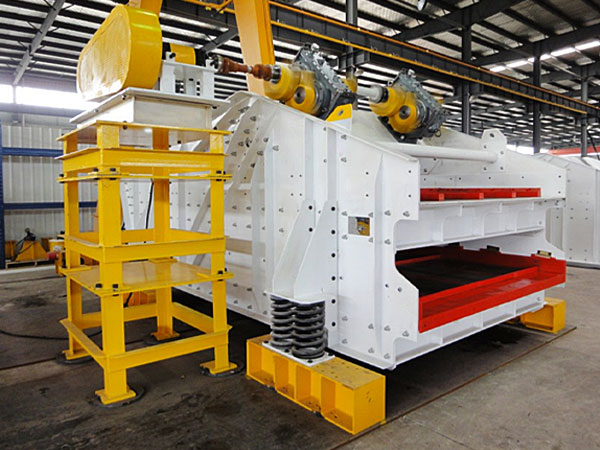A linear vibrating screen is a screening machine that uses vibration to separate materials based on size. It operates using a linear motion, which is generated by two counter-rotating vibratory motors or exciters. These vibrations cause the material to move forward while allowing smaller particles to pass through the screen mesh, effectively sorting and classifying materials. The technical parameters of a linear vibrating screen can be quite extensive, depending on the manufacturer and specific application.
Linear vibrating screen technical parameters

1. Mechanical and Dimensional Parameters:
Screen Size (Length x Width): This is the active screening area, often in meters (m) or millimeters (mm). It’s crucial for determining the throughput capacity of the screen. e.g., 1.5m x 3m, 2m x 4m.
Overall Dimensions (Length x Width x Height): Total physical size of the machine, including the frame, motor, and other components. Important for space planning.
Weight: The total weight of the machine in kilograms (kg) or metric tons (t). Relevant for transportation and installation considerations.
Number of Decks: How many screening surfaces are stacked on top of each other. Single-deck screens perform a single separation, while multi-deck screens can perform multiple separations in one pass.
Deck Inclination Angle: The angle of the screen deck relative to the horizontal. This influences material flow rate and screening efficiency. Typically a small angle (e.g., 5-10 degrees).
Mesh Size (Aperture Size): The size of the openings in the screen mesh, in millimeters (mm) or micrometers (µm). Determines the cut size (separation size). Each deck in a multi-deck screen will have a different mesh size.
Mesh Material: The material used for the screen mesh, such as stainless steel (common grades: 304, 316), woven wire cloth, perforated plate, polyurethane, or rubber. The choice depends on the material being screened and the required durability.
Frame Material: The material used for the screen frame, typically carbon steel (with coating for corrosion resistance) or stainless steel.
Screening Area (Total): The total active area of all screening decks combined.
2. Vibration Parameters:
Vibration Frequency: The number of vibration cycles per second, measured in Hertz (Hz) or cycles per minute (CPM). Frequency affects the material’s agitation and movement on the screen.
Vibration Amplitude (Stroke): The distance the screen deck moves during each vibration cycle, in millimeters (mm). Amplitude influences the material’s throw and the screening rate. Often adjustable.
Excitation Force: The force generated by the vibratory motor to drive the screen, measured in Newtons (N) or kilonewtons (kN). It’s related to the motor’s power and the eccentric weight.
Vibration Direction: The direction of the vibratory motion, which is typically linear (straight line) for linear vibrating screens. The angle of the linear motion relative to the screen surface can be a factor.
Vibrator Type: The type of exciter used to generate the vibrations. Common types include:
Vibratory Motors (Unbalanced Motors): Two motors with eccentric weights rotating in opposite directions. This is the most common type.
Electromagnetic Vibrators: Used for smaller screens.
Mechanical Vibrators: Driven by belts and pulleys.

3. Operational and Performance Parameters:
Capacity/Throughput: The amount of material the screen can process per unit of time, typically measured in metric tons per hour (t/h) or kilograms per hour ( kg/h ). Capacity is heavily dependent on the material being screened, its particle size distribution, and the screen parameters.
…
For more detailed information on the technical parameters of the vibrating screen, please click here: https://www.hsd-industry.com/news/linear-vibrating-screen-technical-parameters/


